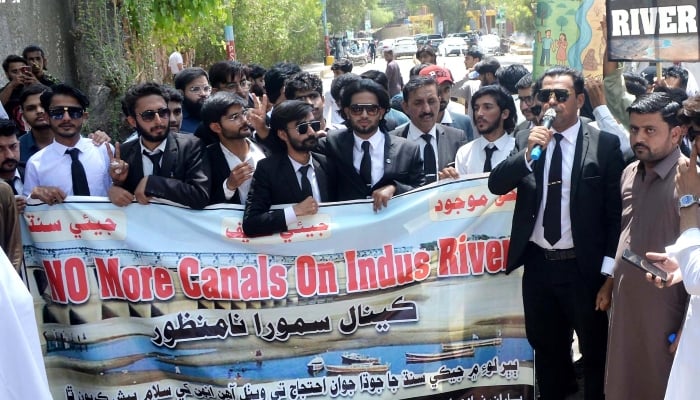Sindh province has witnessed escalating violence as protests against the Pakistan Army-backed canal construction on the Indus River intensified, resulting in casualties, injuries, and widespread property damage. The unrest reflects deep-rooted grievances over water rights and provincial autonomy, highlighting ongoing internal tensions within Pakistan.
Protests Turn Deadly in Northern Sindh
On Tuesday, clashes between protesters and police in northern Sindh escalated into a violent confrontation, leaving two activists dead and at least 15 others injured after police opened fire. Demonstrators set oil tankers ablaze and torched the house of a provincial minister affiliated with the ruling Pakistan People’s Party (PPP). The area was described as a “virtual battlefield” amid the turmoil.
The protesters accuse Punjab’s political dominance and the military establishment of prioritizing Punjab’s interests over Sindh’s, particularly in water resource allocation. The canal project, officially part of the $3.3 billion Green Pakistan Initiative launched earlier this year, aims to irrigate millions of acres of previously uncultivable land primarily in Punjab and some parts of Sindh. However, it has been met with fierce opposition in Sindh, where locals fear it will divert vital water supplies away from their agriculture-dependent province.
Roots of the Canal Controversy
The canal project, spearheaded by Army Chief Field Marshal Asim Munir and Punjab Chief Minister Maryam Nawaz, was initially shelved in late April following widespread protests and a meeting of the Council of Common Interests (CCI). Despite official claims of halting the work, activists and local observers allege that construction has quietly continued, with the project expanding from six to nine canals.
Sindhi nationalist groups and civil society have condemned the initiative, warning that the canals will exacerbate water scarcity, damage the fragile Indus delta ecosystem, and disproportionately benefit Punjab’s feudal landlords and agribusinesses. The protests have included highway blockades disrupting transport to Karachi Port, sit-ins by lawyers, and mass demonstrations across Sindh’s cities.
Political Fallout and Provincial Rivalries
The protests have exposed fractures within the ruling coalition. The PPP, which governs Sindh and is part of Prime Minister Shehbaz Sharif’s federal government, has faced criticism from Sindhi nationalist parties like Jeay Sindh Muttahida Mahaz (JSMM) for its perceived weak stance on the issue. JSMM leaders accuse the military and federal establishment of using PPP leaders to suppress legitimate regional demands.
The dispute over the canals has revived historic tensions between Sindh and Punjab, Pakistan’s two largest provinces, over resource distribution and political power. The situation is further complicated by India’s recent suspension of the Indus Waters Treaty, which has heightened anxieties over water security in the region.
Impact and Outlook
The violent protests and ongoing unrest in Sindh underscore the challenges Pakistan faces in balancing provincial rights with federal development plans. With two activists dead and many injured, the crisis has deepened local resentment and threatens to destabilize the region further.
Observers caution that without meaningful dialogue and equitable water-sharing agreements, the canal project dispute could continue to fuel political instability and social unrest in Sindh, complicating Pakistan’s broader efforts to address its water and food security challenges.

Comments
Post a Comment